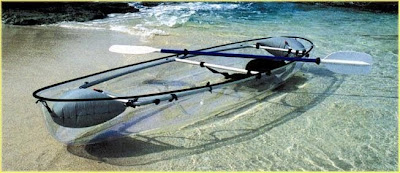I've been collecting
references to new and innovative materials for a while and thought it might be useful to post a selection of them here. These references are selected from a wide range of industrial sectors and in one way or another have some reference to architecture and the built environment. Collectively, they all appear to fit in to a set of familiar categories, the same categories or disciplines we work to as designers (cost analysis aside): Aesthetics, Structural and Environmental design. This was a bit of a surprise to me because I thought there might be a more complexed structure, but it is revealing for a couple of reasons.
 |
| Hypothetical structure of material innovations as a venn diagram |
First, it illustrates that most innovations are not isolated to one discipline. They sit in the zones between two or all three disciplines. This means that similar developments within the building industry would need to result from closely coordinated work between different designers and engineers. As noted
before, a criticism of the way design consultants work in the building industry is that they are too isolated and coordination too often just means making sure everything fits together for site. From the examples below, there are many opportunities to work with exciting new materials but it would require the acceptance of closer working relationships in the building industry; rethinking the way design professionals coordinate through work.
Secondly, in the building industry many non-aesthetic innovations are hidden or made invisible. This starts to become apparent whenever a building is un-picked. For example, the steel frame (an innovation resulting from the requirements of new building types) is clad in traditional materials. There is something about the inherent traditional approach to the design of the built environment which results in many innovations in the building industry being hidden. In other industrial sectors, and in other areas of study, structural and environmental material innovations often have more presence, and why not? There is some really cool stuff going on.
 |
Interior of the RIBA headquarters at Portland Place, London illustrates the point above very well.
Structural innovations of frame and large spams are hidden and dressed
with stone and other traditional materials. |
To demonstrate, here is a selection of examples:
Aesthetic
These innovations play on our senses and involve developments in light transmission, colour, texture, sound and even taste. They tend to play with our perceptions of what we are familiar with and our 'value systems' of what we are comfortable with in response to change.
 |
| Pultruded GRP sheets. Transparent and used for cladding |
Structural & Aesthetic
Structural
These innovations relate to how materials and objects hold their physical presence or how this can change or be controlled under specific circumstances.
 |
| Ferro fluid (A liquid which likes to behave like a metal, and can map magnetic fields) |
 |
Superalloys
Each blade is a single crystal structure allowing the material to
perform way beyond it's natural capabilities |
 |
| Vectran (A fabric stronger than Kevlar) |
Environmental & Structural
Environmental
These innovations relate to the way materials work with the environment or work to control it.
Environmental & Aesthetic
Environmental, Structural & Aesthetic
Putting it all our heads together as designers and engineers can lead to greater possibilities in the future for material innovations in the building industry.
 |
The promise of carbon fibre components which act as a structural monocoque,
aesthetic exterior, and electric fuel cell |
 |
The promise of buildings where the envelope works structurally, moderates light and the
environment within and forms the aesthetic exterior. |

























